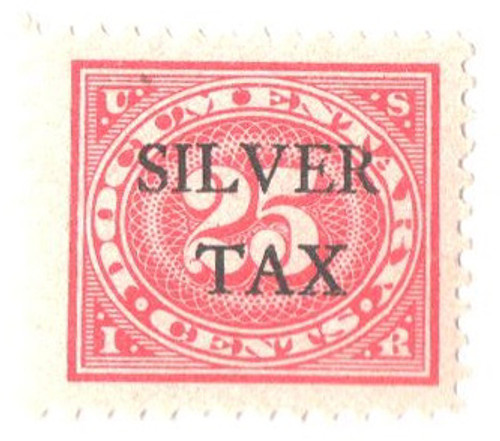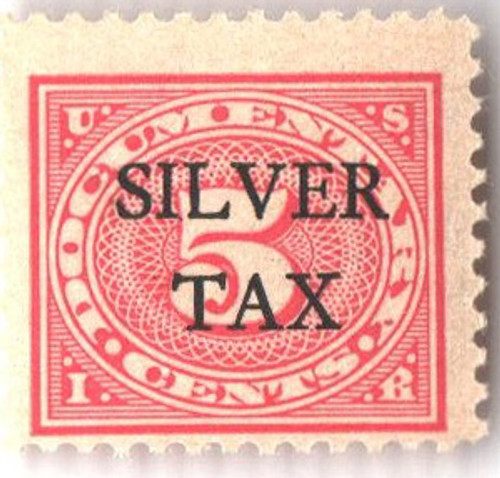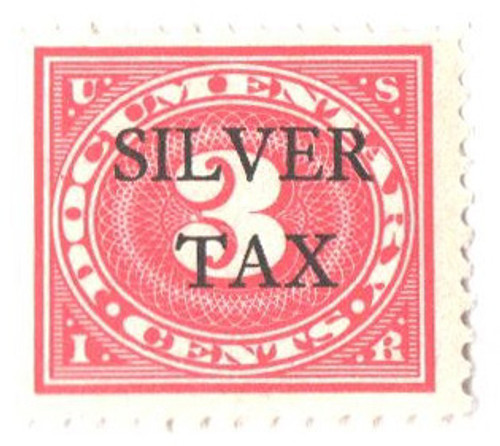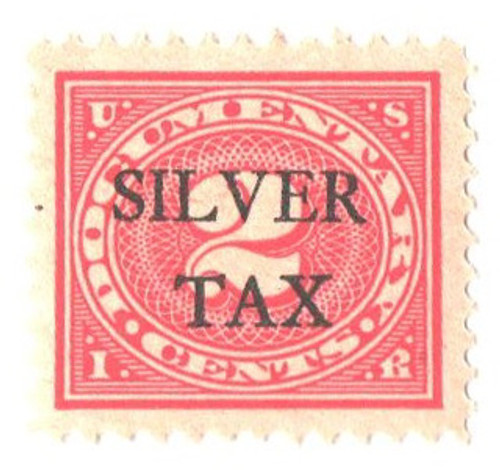
# RG7 - 1934 10c Silver Tax, carmine rose, perf 11
Silver tax stamps were authorized by Congress on June 19, 1934, pursuant to the Silver Purchase Act of 1934.
As a measure to stabilize the US economy and to prevent runs on banks, in the aftermath of the Great Depression, the Gold Standard was abolished in 1933, and all gold bullion and gold coins in private hands were recalled. The government then feared that people would start hoarding silver bullion, causing further runs on US banks.
In order to curb the hoarding of silver bullion, the Silver Purchase Act of 1934 established the Silver Standard, called for the government to establish silver reserves to backup the silver certificate banknotes in circulation, and called for the cessation of the minting of silver dollar coins. The act also imposed a 50% tax on the profit realized on any transfer of silver bullion occurring after May 15, 1934 and provided for the use of silver tax stamps.
The new silver tax stamps were attached to transfer memorandums, indicating the payment of the federal silver tax. From 1934 to 1940, documentary revenue stamps were overprinted "SILVER TAX". New silver tax stamps were first produced in 1941.
Silver tax stamps were authorized by Congress on June 19, 1934, pursuant to the Silver Purchase Act of 1934.
As a measure to stabilize the US economy and to prevent runs on banks, in the aftermath of the Great Depression, the Gold Standard was abolished in 1933, and all gold bullion and gold coins in private hands were recalled. The government then feared that people would start hoarding silver bullion, causing further runs on US banks.
In order to curb the hoarding of silver bullion, the Silver Purchase Act of 1934 established the Silver Standard, called for the government to establish silver reserves to backup the silver certificate banknotes in circulation, and called for the cessation of the minting of silver dollar coins. The act also imposed a 50% tax on the profit realized on any transfer of silver bullion occurring after May 15, 1934 and provided for the use of silver tax stamps.
The new silver tax stamps were attached to transfer memorandums, indicating the payment of the federal silver tax. From 1934 to 1940, documentary revenue stamps were overprinted "SILVER TAX". New silver tax stamps were first produced in 1941.













